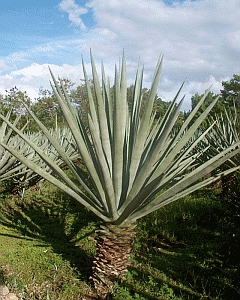





Disclaimer: Copyright infringement not intended.
Context
The new Finding
Significance of the Finding
Sisal Trees: A Comprehensive Overview
Botanical Characteristics:
Cultivation and Habitat:
Fiber Production:
Economic Importance:
Environmental Impact:
Other Uses:
Challenges and Controversies:
Future Prospects:
In conclusion, sisal trees play a crucial role in various industries, particularly in providing durable fibers for manufacturing. Understanding the botanical characteristics, cultivation practices, and economic aspects of sisal contributes to informed agricultural practices and sustainable use of this versatile plant.
Dioxin: Overview
Dioxins refer to a group of toxic chemical compounds that share a similar chemical structure and are characterized by the presence of two benzene rings connected by two oxygen atoms. Among the various dioxins, the most studied and notorious is 2,3,7,8-tetrachlorodibenzo-p-dioxin (TCDD).
Sources and Formation:
Environmental Persistence:
Health Effects:
Regulatory Measures:
Management and Cleanup:
Research and Monitoring:
Challenges and Concerns:
Understanding the sources, environmental behavior, and health implications of dioxins is crucial for effective environmental management and public health protection. The persistent nature of these compounds emphasizes the need for international cooperation and stringent regulatory measures to address and prevent dioxin pollution
|
PRACTICE QUESTION Question: Which of the following statements regarding sisal trees (Agave sisalana) is/are correct? 1.Sisal is native to the arid regions of Central America. 2.Sisal fibers are primarily extracted from the roots of the plant. 3.Sisal cultivation is characterized by its preference for humid tropical climates. 4.The main economic product derived from sisal is its resilient fibers used in industries such as rope-making and carpet production. Choose the correct answer from the options below: A. 1 and 2 only B. 3 and 4 only C. 1 and 4 only D. 2 and 3 onlyTop of Form Correct Answer: C. 1 and 4 only Explanation:
Correct: Sisal (Agave sisalana) is indeed native to the arid regions of Mexico, specifically the Yucatan Peninsula in Central America.
Incorrect: Sisal fibers are not extracted from the roots but from the leaves of the sisal plant. The fibers are obtained through a process that involves crushing and scraping the leaves to extract the pulp, followed by combing and drying to produce the fibers.
Incorrect: Sisal thrives in hot and arid climates and is not typically cultivated in humid tropical climates. It prefers well-drained soils and is commonly grown in tropical and subtropical regions worldwide.
Correct: The primary economic product of sisal is its strong and durable fibers, extracted from the leaves. These fibers are widely used in industries for manufacturing ropes, twines, carpets, and various other products due to their strength and resistance to deterioration. Therefore, the correct answer is C. 1 and 4 only. PRACTICE QUESTION Question: Which of the following statements regarding dioxin is/are correct? 1.Dioxin is a synthetic compound commonly used in the production of plastics and pesticides. 2.Agent Orange, a herbicide used during the Vietnam War, contained dioxin, leading to serious health and environmental consequences. 3. Dioxin exposure is primarily associated with beneficial effects on human health. 4.Dioxins are a class of persistent organic pollutants with a high potential for bioaccumulation in the food chain. Choose the correct answer from the options below: A. 1 and 3 only B. 2 and 4 only C. 1 and 4 only D. 2 and 3 only Correct Answer: B. 2 and 4 only Explanation:
Incorrect: Dioxin is not a synthetic compound used in the production of plastics and pesticides. It is a group of chemical compounds that can be produced as byproducts of industrial processes involving chlorine, such as waste incineration and certain chemical manufacturing.
Correct: Agent Orange, a herbicide used by the U.S. military during the Vietnam War, contained dioxin (specifically TCDD - 2,3,7,8-tetrachlorodibenzo-p-dioxin). Exposure to Agent Orange has been linked to serious health issues and environmental damage.
Incorrect: Dioxin exposure is associated with adverse health effects. Dioxins are known to be highly toxic and can cause a range of health issues, including reproductive and developmental problems, immune system damage, and certain cancers.
Correct: Dioxins are indeed a class of persistent organic pollutants that have a high potential for bioaccumulation in the food chain. They can accumulate in fatty tissues of animals and humans, leading to higher concentrations at higher trophic levels. Therefore, the correct answer is B. 2 and 4 only. |







© 2025 iasgyan. All right reserved